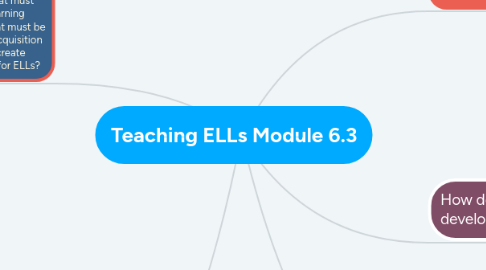
1. What was your previous understanding of English development? What are some of the most significant differences between the acquisition of a first and second language?
1.1. The first time I really thought about English development was when I did a co-op placement in a Grade 2/3 class during High School. I was helping the grade 2s with their Past Tense work, and this little girl wrote “bringed” for the past tense of “bring”. She followed the rule of adding -ed that she had learnt. When I let her know that it’s actually “brought” and she asked me why, I didn’t have a good answer for her. I just told her that some verbs end differently when they’re in different tenses, and you just kind of need to remember them. That made me realize…English is quite complicated. There are many words that are not pronounced like they look (e.g. why are drought and thought pronounced completely differently?), homonyms, rules and exceptions to the rules you need to remember (e.g. i before e except after c…but with the exception of a whole slew of words) etc.
1.1.1. Now that I’m doing this course, it makes sense that having a developed first language would make learning a second language much easier, because instead of having to learn everything from scratch, you have an understanding of language to begin with and can draw comparisons between your L1 and the new language you’re learning.
2. Think about your current teaching practice or understanding of the teaching practice. Does your approach build on students’ existing cultural capital and knowledge of ELLs? What must teachers know about learning programs for ELLs? What must be understood about the acquisition of language in order to create effective programming for ELLs?
2.1. A big part of my teaching practice is getting to know my students so that we can find ways to relate what they learn in class to their daily lives. I also always try to give a variety of assignments and lots of choice within those assignments. Not only does this engage students in the lessons more, but it allows them to connect with the course material in a much deeper way and give them the change to explore their interests.
2.2. I think that my general approach to teaching builds on students’ existing cultural capital in general, but would definitely help ELLs because it gives them those same opportunities that I mentioned above, as well as demonstrates to them that I care about them as individuals, that I want to learn about their interests and backgrounds, and that I will do everything I can in order to help them succeed.
2.3. The theory of language development that stood out to me the most in relation to ELLs is Vygotsky’s emphasis on social learning. We know that getting to practice the language with others ELLs and with students and staff who’s first language is English will greatly help with their language development, and we should give them as many opportunities to practice their newfound language (as well as develop their L1 as possible).
3. Why must we support the use of dual language texts in the classroom? What are some of the specific benefits students can gain when teachers adopt this approach? What are some dual language strategies that you can implement that will support L1? How can teachers support parents with understanding the importance of a bilingual/multilingual student?
3.1. Allowing students to use their L1 in the classroom “provides a foundation for developing proficiency in additional languages, serves as a basis for emotional development, and provides a vital link with the student’s family and cultural background.” Using dual languages in the classroom allows students to develop both their L1 and English much more efficiently, shows students that we are accepting of their backgrounds, gives parents a connection to their child’s learning, and helps us to better know our students.
3.1.1. Some dual language strategies that we could implement in the classroom are: - Having students write a weekly journal entry in their L1 and then working with them during class to translate them into English - Encouraging students to do brainstorming and mind maps in their L1 Writing first drafts/outlines/notes etc. in their L1 - Assigning students a room partner or tutor who speaks both their L1 and English - Use learning activities that use all L1s spoken in the class (ex: compare numbers in various languages) - Have students create dual-language projects (ex: bilingual books, pamphlets, brochures, etc.)
